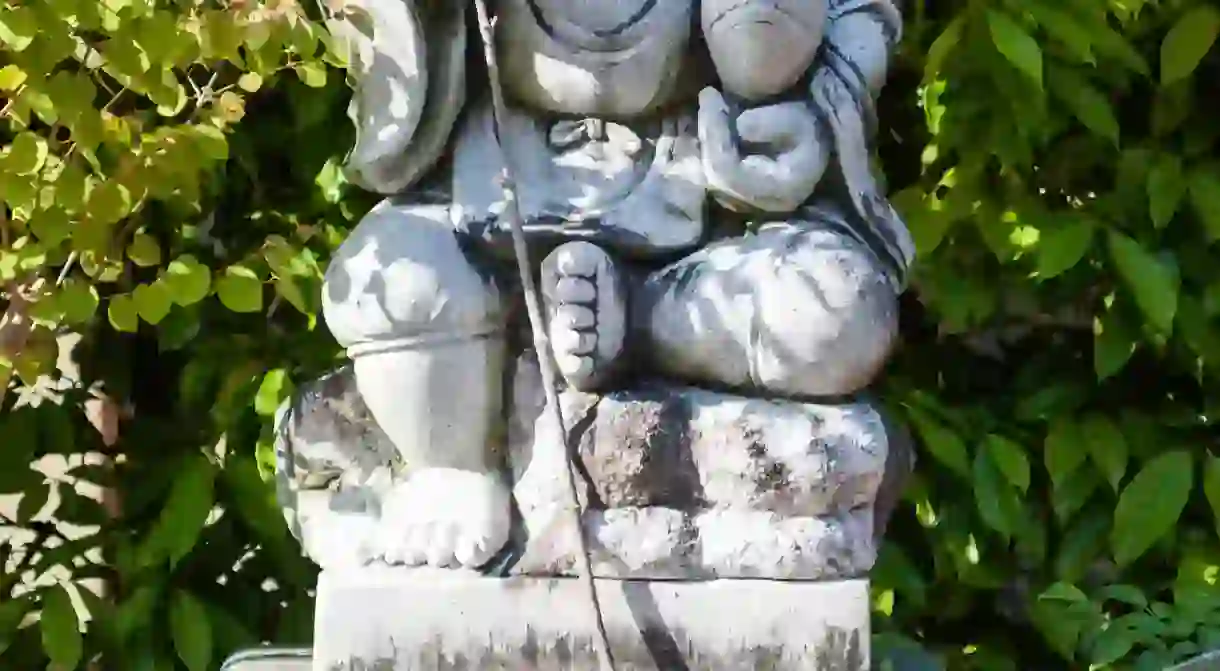The Surprising History Behind Canada’s Playground of the Gods

Located on Burnaby Mountain near Simon Fraser University, the Playground of the Gods is a series of sculptures with incredible views overlooking the Greater Vancouver Area. Keep reading to learn more about its captivating history.
The Playground of the Gods’ beginning
The surprising thing about the Playground of the Gods (known in Japanese as Kamui Mintara) is that, in general, many folks automatically think that the First Nations people carved the totem poles. Although there are some similarities in the workmanship and symbols, the woodcarver is, in fact, a Japanese man named Nuburi Toko.

Tokio – Ainu people
Toko is an Ainu people—an indigenous tribe from northern Japan. His home is Kushiro, on the island of Hokkaido, which is the sister city of Burnaby. While visiting the Canadian city in 1985 as part of a delegation, he toured Burnaby Mountain and became inspired. Toko pitched his wooden sculpture idea to city officials, who gave it the green light.
Constructing the Playground of the Gods
Alongside his son, Shusei, and with assistance from the City of Burnaby’s carpenter Phil MacGregor, Toko began working on the Playground of the Gods in the fall of 1989. Burnaby provided him with access to a works yard for carving the sculptures, plus 20 large logs. In the end, he carved a total of 100 logs for the 25 totems. The finished product was unveiled to the public in 1990, in celebration of the sister cities’ 25th anniversary. Toko wanted the Playground of the Gods to symbolize the friendship and goodwill between the two cities.

The significance
Atlas Obscura reports that overall, the overlapping associations demonstrated in the totem poles—among humans, gods, animals, and nature—abstractly symbolizes the friendship between Burnaby and Kushiro. “Playground of the Gods draws on Ainu animist tradition, with animal totems representing the gods descending to create the world, while the smaller surrounding poles represent the Ainu’s intertwined relationship with the divine.”
Visiting the Playground of the Gods
Fortunately, it isn’t difficult to see the Playground of the Gods when visiting Vancouver, and there’s plenty of parking nearby. Burnaby Mountain is also accessible by public transport. You just need to get a bus to Simon Fraser University, and the wooden sculptures are an easy stroll from the university’s main bus stops. Remember to pack warm layers as the Playground of the Gods stands high on a hill. The best time to view this work of art is around sunset, as the descending sun shines through the totems.
Did you know – Culture Trip now does bookable, small-group trips? Pick from authentic, immersive Epic Trips, compact and action-packed Mini Trips and sparkling, expansive Sailing Trips.













